'Global Shield': Better late than never?
At least $200 million committed under Global Shield
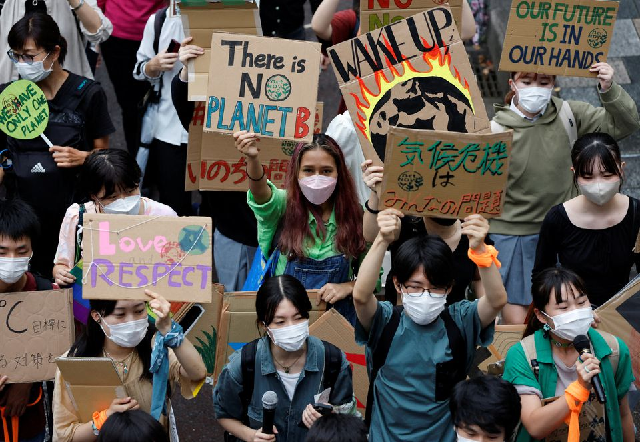
Nine days into COP27, Pakistan’s unremitting efforts for climate justice finally pay off to a certain extent as the country will be among the first to receive “Global Shield” climate funding, a G7-backed scheme announced Monday to compensate climate-vulnerable countries for their sufferings from the “climate carnage” penetrated by the developed world.
Among the current $200 million plus commitment under “Global Shield”, $170 million is from Germany, $60 million from France (over the next three years), $10 million from Ireland, $7 million from Canada and $4.7 million from Denmark.
Total cumulative emissions from US nearly 56x those from Pakistan. Source: IEA
The “long overdue” funding, which comes twelve years after developed countries’ never-fulfilled pledge of $100 billion every year to help developing countries fight against climate change, responds in part to the strong case Pakistan is making at the world conference, yet it is far from sufficient in terms of the amount raised and the number of contributing countries to save the “dystopia” the world is heading for and to commensurate with the due responsibility developed countries are supposed to take as major greenhouse gas emitter throughout history.
According to a report on climate change published by KASB Securities ahead of COP27, the cumulative GHG emissions originating from the developed world have significantly outpaced developing countries from a historical perspective. As per IEA, from 1971 to 2020, G7 accounted for 34.5% of the world's total GHG emissions in the energy sector.
In particular, the US alone takes up 20% of the world's total, nearly 56x higher than Pakistan and is the world's leading GHG emitter. Unfortunately, the world’s largest economy hasn’t contributed even one penny to the “Global Shield” plan.
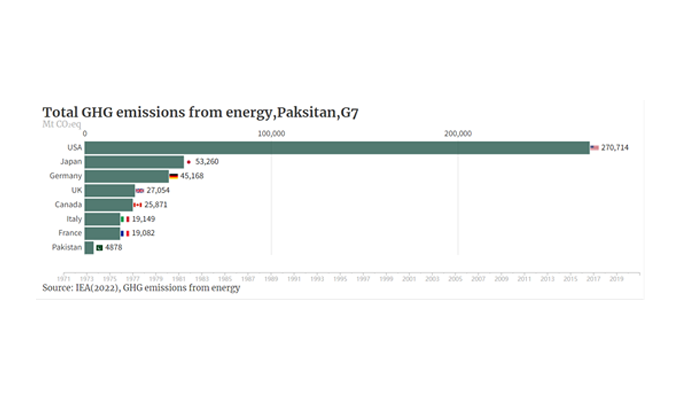
China is the largest investor in energy transition in 2021. Source: KASB
While there are still questions as to whether the “Global Shield” is “global” enough, the world is facing a CO2 emission level at an all-time high as an economic rebound after Covid-19 led to the highest level of emissions from power plants and coal consumption.
“With 2022 already set to become one of the 10 warmest years on record, there is a dire need of increased technical and financial support to combat climate change”, the KASB report stressed.
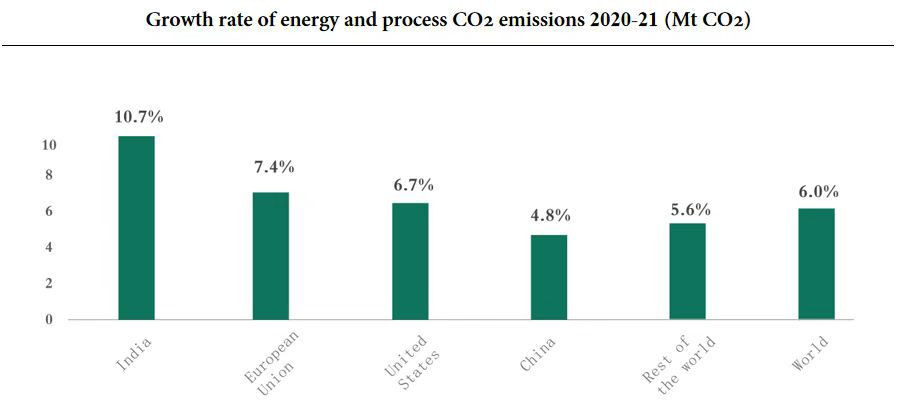
Beyond the 'Global Shield'
According to the UN Adaption Gap Report, the estimated climate adaption cost was found to be 5-10 times higher than the present public adaption finance flows. The world expects the US and EU to deliver on the $100 billion climate finance commitment to developing countries and take the lead in emissions reduction to ensure the right to development of developing countries.
In addition, fair and reasonable reductions in emission standards should be put in place. US President Biden has set a 50-52% reduction target in carbon emissions by 2030 from levels witnessed in 2005. But as per Emission Database for Global Atmospheric Research (EDGAR), even a 50% reduction suggests the US’s per capita emissions in 2030 would be nearly 2.2x the current world average.
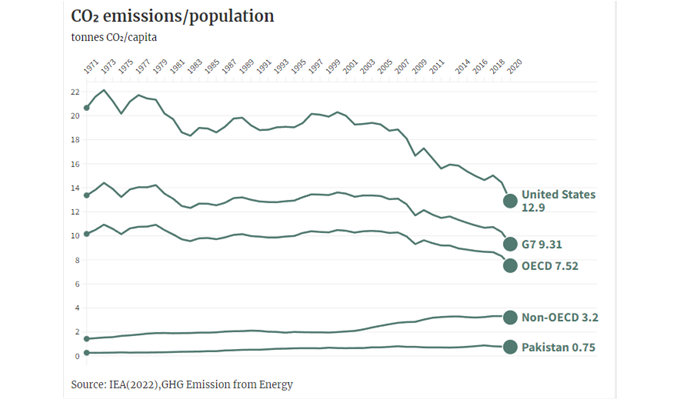
US per capital GHG emissions from energy outpaced Pakistan by 17x. Source: IEA
"What has happened in Pakistan will certainly not only stay in Pakistan. We are seeing climate change impacts crossing borders and wreaking havoc. What is needed given today's pace of change is a tripling of the climate financing targets of $100 billion, and not double-counting this as overseas development assistance, but actualized, transparent and agile resource transfers", Pakistani climate minister Sherry Rehman once said in an interview with Nikkei Asia before COP27.
Pakistan’s response to Climate Change
Pakistan has been working closely with the international community, especially its neighbor China, to tackle the tremendous challenge.
“We think China’s solutions to climate change are more feasible for countries such as Pakistan. China’s status as a developing nation allows it to relate to the realities of other developing countries and formulate a more suitable and effective plan for tackling climate change”, the report says.
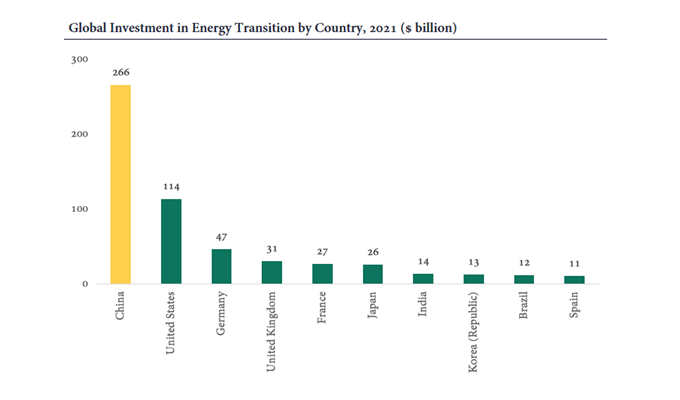
China is the largest investor in energy transition in 2021. Source: KASB
According to a recent report, a Green Corridor will be launched jointly with China to focus on the agricultural environment, food security, and green development, which is part of the two brother countries’ collaboration toward a green future.
In the power sector, the largest carbon-emitting source in Pakistan, ambitious steps have been taken. The Alternative Energy Development Board (AEDB) has unveiled a policy for a 10,000 MW solar PV energy initiative, which, according to CEO of AEDB, would require a $6bn investment.
“Chinese companies and banks are best suited to finance these projects as they have already been working in Pakistan for various Power Projects”, he mentioned in an interview.
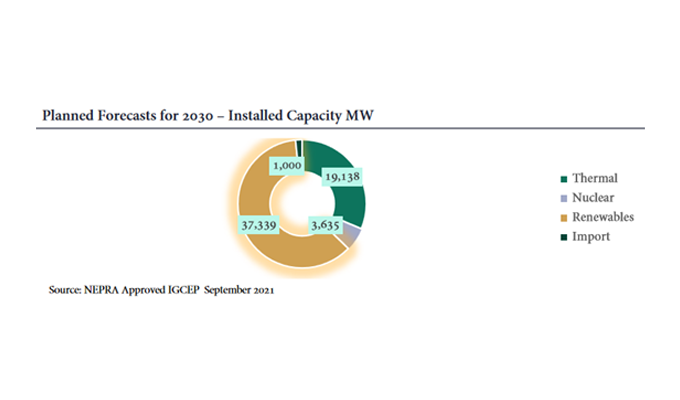
On the other side, China is encouraging the participation of Chinese companies in Pakistan's endeavor for green, low carbon and environment-friendly development, as has been confirmed in the Joint Statement between China and Pakistan released this month during PM Shehbaz Sharif’s state visit to China.
The Joint Statement further says, “Appreciating Pakistan’s initiative to combat human-induced climate change and China’s initiative to promote green cooperation under the Belt and Road Initiative, the two sides agreed to step up cooperation in such areas as ecosystem restoration and water resource management”.





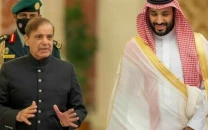












COMMENTS
Comments are moderated and generally will be posted if they are on-topic and not abusive.
For more information, please see our Comments FAQ